June is rice planting season! On Wednesday, July 14 we went to an annual event at Sumiyoshi Taisha called Otaue Masturi. This translates to Rice Field Planting Festival. Sumiyoshi Taisha (sue-me-yo-she-tie-sha) is the same Shinto shrine that we went to for hatsumode (the first shrine visit of the new year) on New Year’s Day. The shrine has its own rice paddy where they hold the event. We rode the train to the Sumiyoshi Taisha train station. We got there early enough to buy a ticket for a seat in the shade. The whole event is about 3 hours long and being in shade is critical to happiness and health! The tickets were 1000 yen each (about $9 USD). The tickets came with a really nice looking program explaining the ceremony in detail, but it is all in Japanese.
This is how the event is set up. There is a stage in the center where performers sing and dance and a priest gives blessings to the rice plants. I believe the intent of this festival is two fold: not only to pray for a successful harvest, but also to honor traditions and keep them alive for the next generations. This event at Sumiyoshi Taisha is the most famous and elaborate of the otaue matsuri that are held around Japan. The black flower symbol on the white banners on this structure pictured here is this shrine’s insignia. The seating goes all the way around the rice paddy.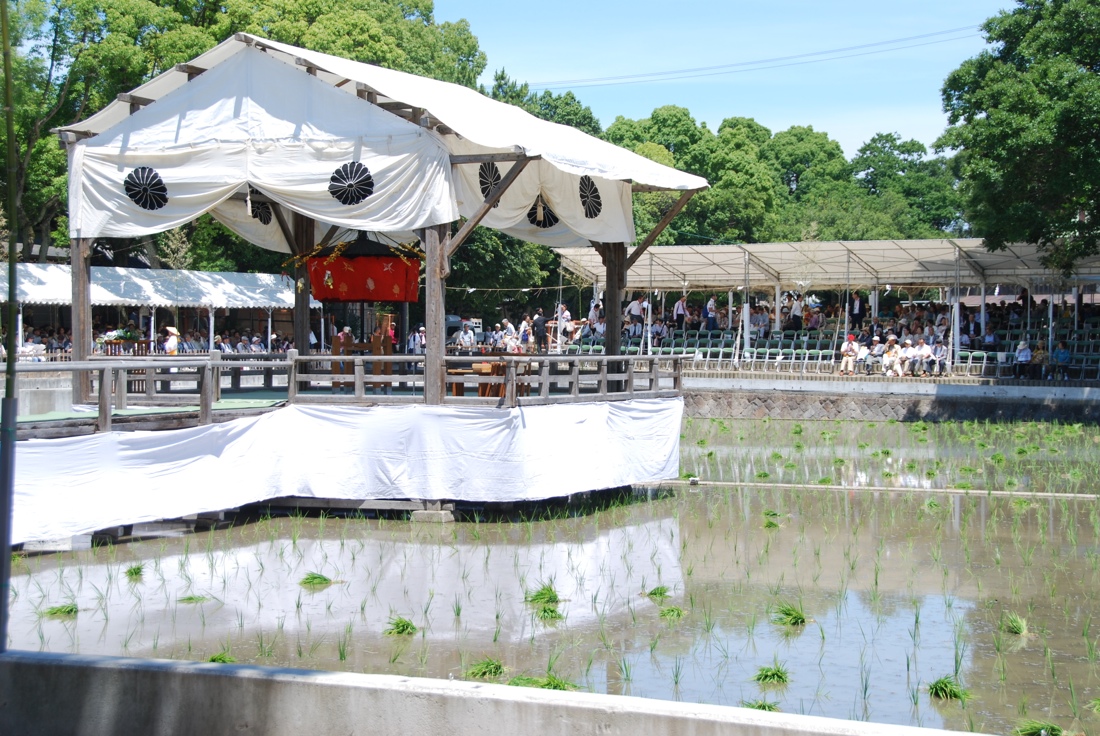
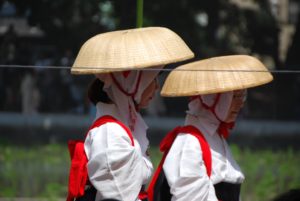
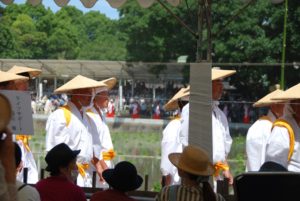
First there is a parade of all of the participants. They walk around the rice paddy and everyone cheers. There are men in full samurai armor, men playing music, women in kimono with fancy headdress, men and women in the rice planting attire, girls and boys and young kids all dressed in festive clothes.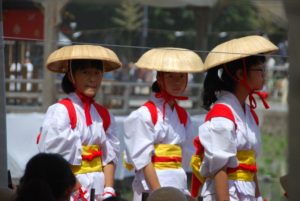
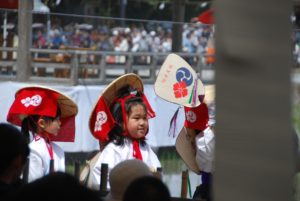
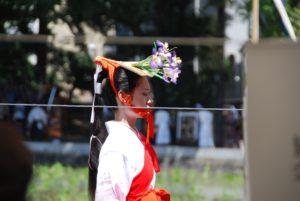
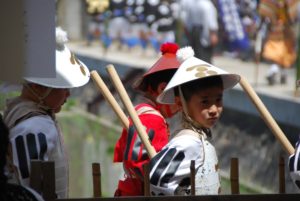
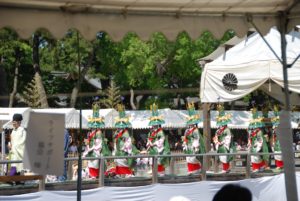 There are various blessings of the rice that go on throughout the ceremony. A group of ladies dressed in red and white perform a dance called the “Yaotome no Tamai” or “The Rice Paddy Dance of Many Maidens.” Several groups walk on to the main stage, do something, and walk off. From our seats in the back it was hard to tell everything that was going on. And we could not follow along in our program. This woman in this next photo is performing a dance to music that is meant to pray for rain (I think).
There are various blessings of the rice that go on throughout the ceremony. A group of ladies dressed in red and white perform a dance called the “Yaotome no Tamai” or “The Rice Paddy Dance of Many Maidens.” Several groups walk on to the main stage, do something, and walk off. From our seats in the back it was hard to tell everything that was going on. And we could not follow along in our program. This woman in this next photo is performing a dance to music that is meant to pray for rain (I think). An ox is brought to the rice paddy to symbolically plow the field before the planting starts. He only plows a small corner and then they parade him around the rice paddy so everyone can cheer for the ox, too. He is quite a celebrity.
An ox is brought to the rice paddy to symbolically plow the field before the planting starts. He only plows a small corner and then they parade him around the rice paddy so everyone can cheer for the ox, too. He is quite a celebrity.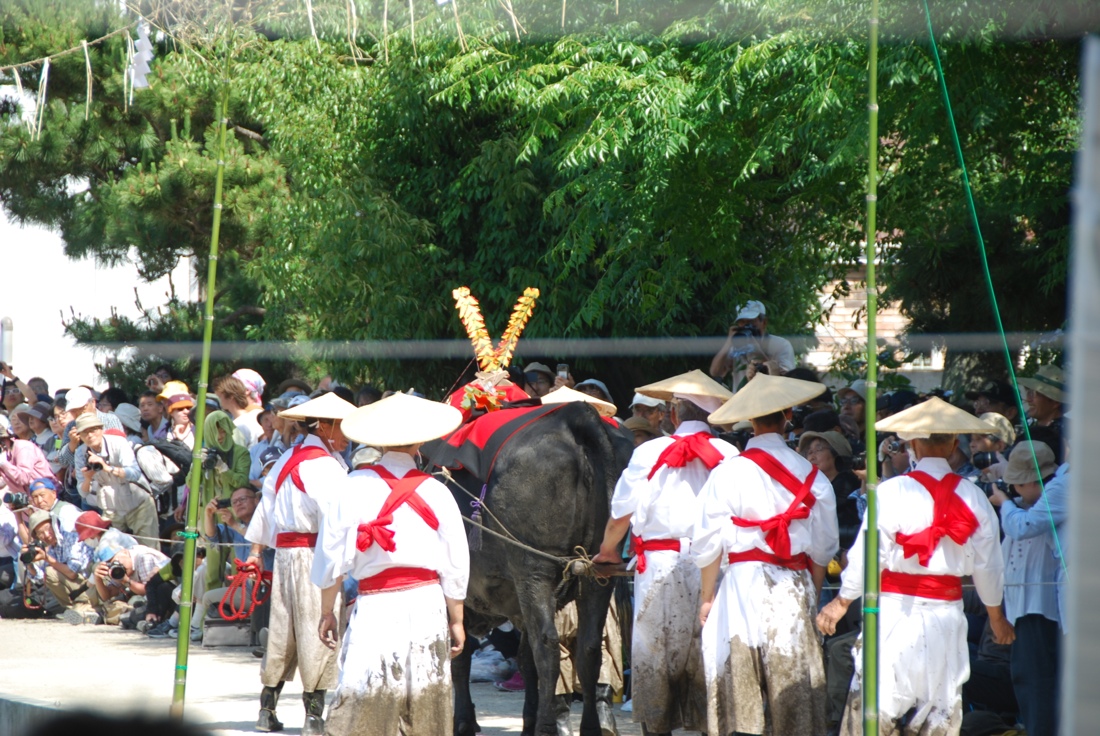 After the ox swings through then the planting begins. The men and women are in the rice paddy getting dirty in knee deep watery mud. I see now why they wear those hats which are associated with living here. It’s terribly hot in the sun! But despite the heat, these people are all smiling and having a good time.
After the ox swings through then the planting begins. The men and women are in the rice paddy getting dirty in knee deep watery mud. I see now why they wear those hats which are associated with living here. It’s terribly hot in the sun! But despite the heat, these people are all smiling and having a good time. 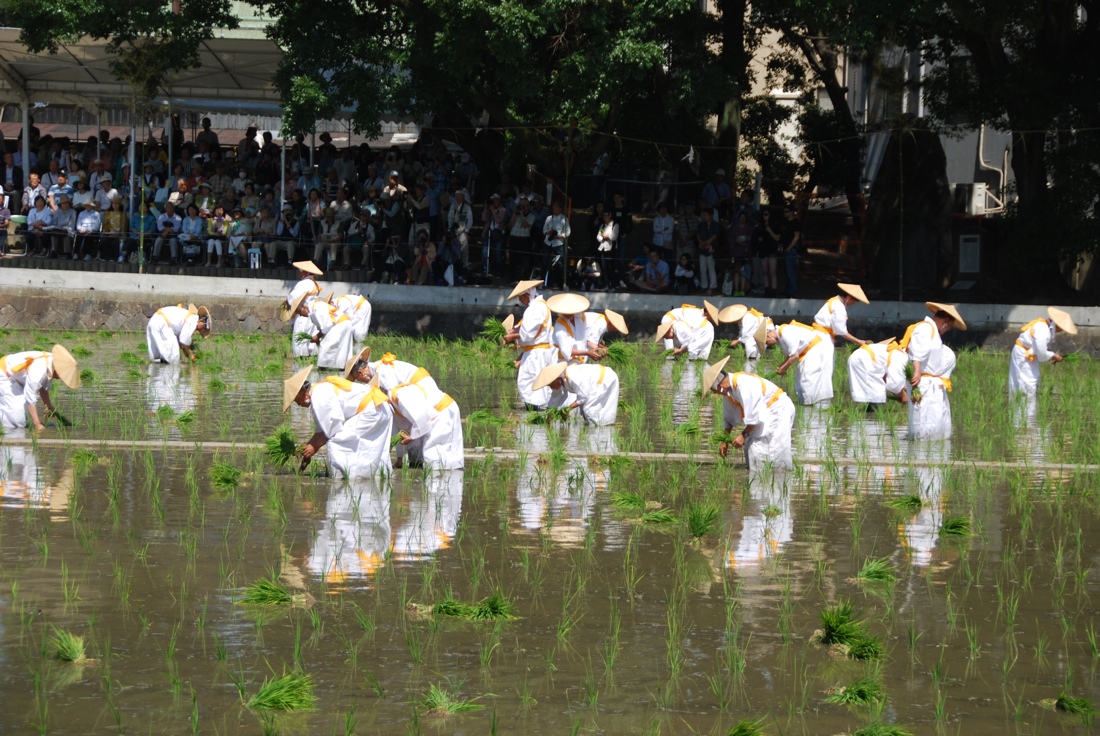
 This passage is from www.unmissablejapan.com:
This passage is from www.unmissablejapan.com:
“Perhaps the most famous of all Japan’s otaue festivals takes place at Sumiyoshi Taisha Shrine in Osaka City. It is said to have taken place every year since 211 A.D., and is noted for its faithful reproduction of ancient rituals. Before the rice is planted, wooden ploughs pulled by decorated oxen are used to till the field. As rows of colourfully-dressed men and women plant the rice seedlings, a whole sequence of performances takes place alongside. First a group of women dance slowly and gracefully, then a solo performer dances to pray for rain. All this is accompanied by traditional instruments, including shamisen and a giant taiko drum. There’s a parade of samurai in full armour and boys with wooded swords put on a battle display. The climax of the festival is the ‘Sumiyoshi Dance’, performed by 150 girls from local elementary and junior-high schools.”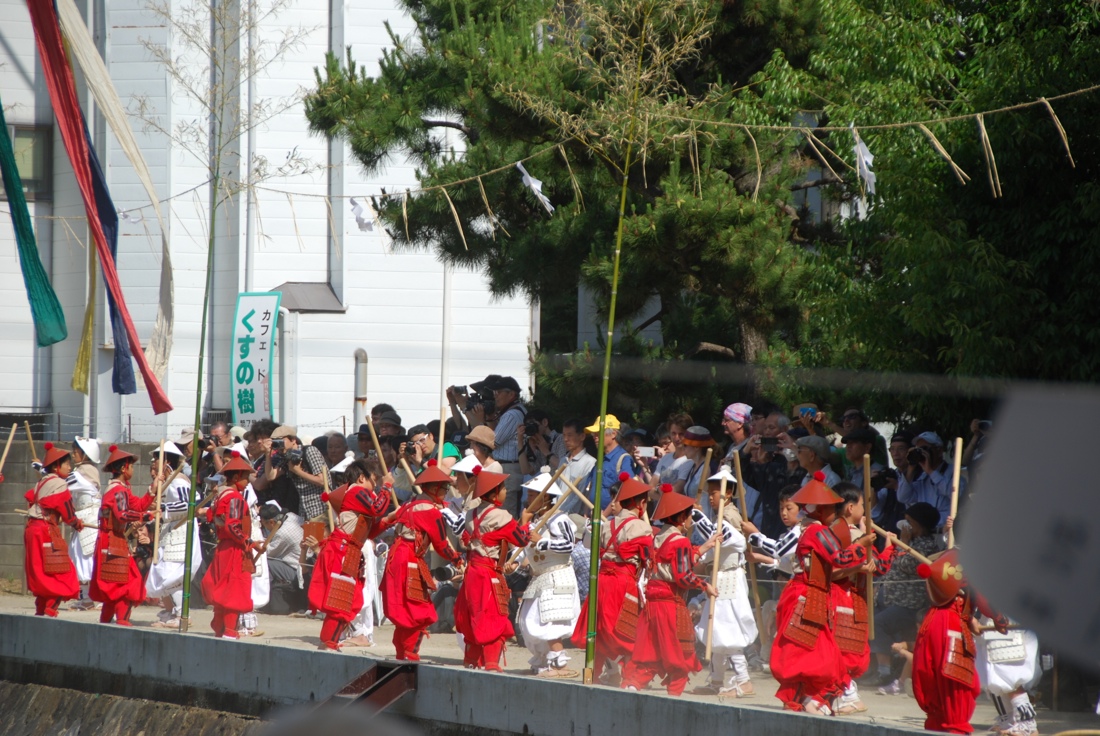 These are photos from Sumiyoshi Taisha. From www.japan-guide.com: “Sumiyoshi Taisha is the main and most famous of over two thousand Sumiyoshi shrines found across Japan. Sumiyoshi shrines enshrine the kami, or Shinto gods, who protect travelers, fishermen and sailors at sea. The shrines are therefore usually found close to harbors.”
These are photos from Sumiyoshi Taisha. From www.japan-guide.com: “Sumiyoshi Taisha is the main and most famous of over two thousand Sumiyoshi shrines found across Japan. Sumiyoshi shrines enshrine the kami, or Shinto gods, who protect travelers, fishermen and sailors at sea. The shrines are therefore usually found close to harbors.”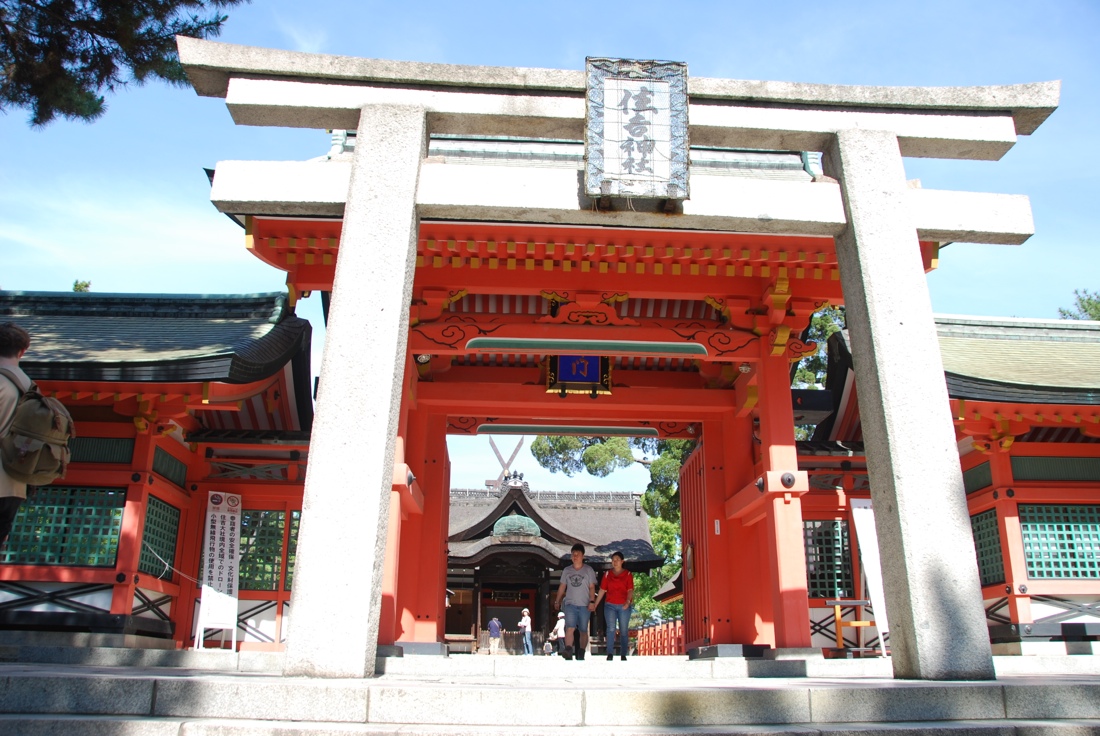
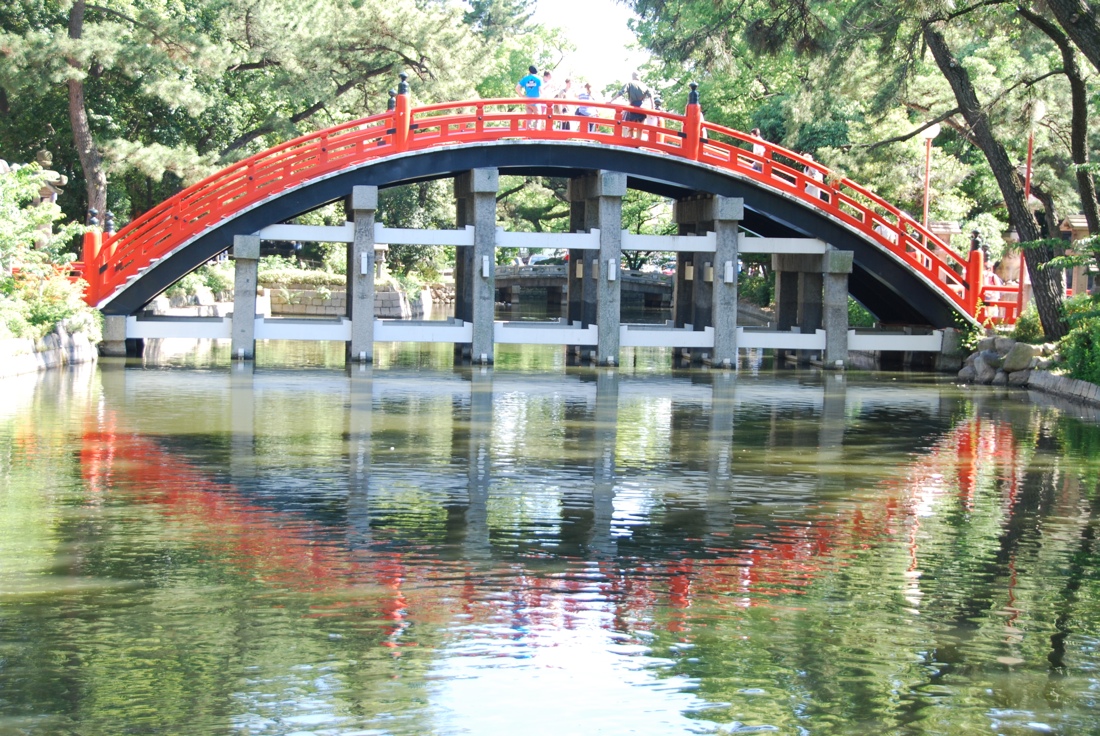
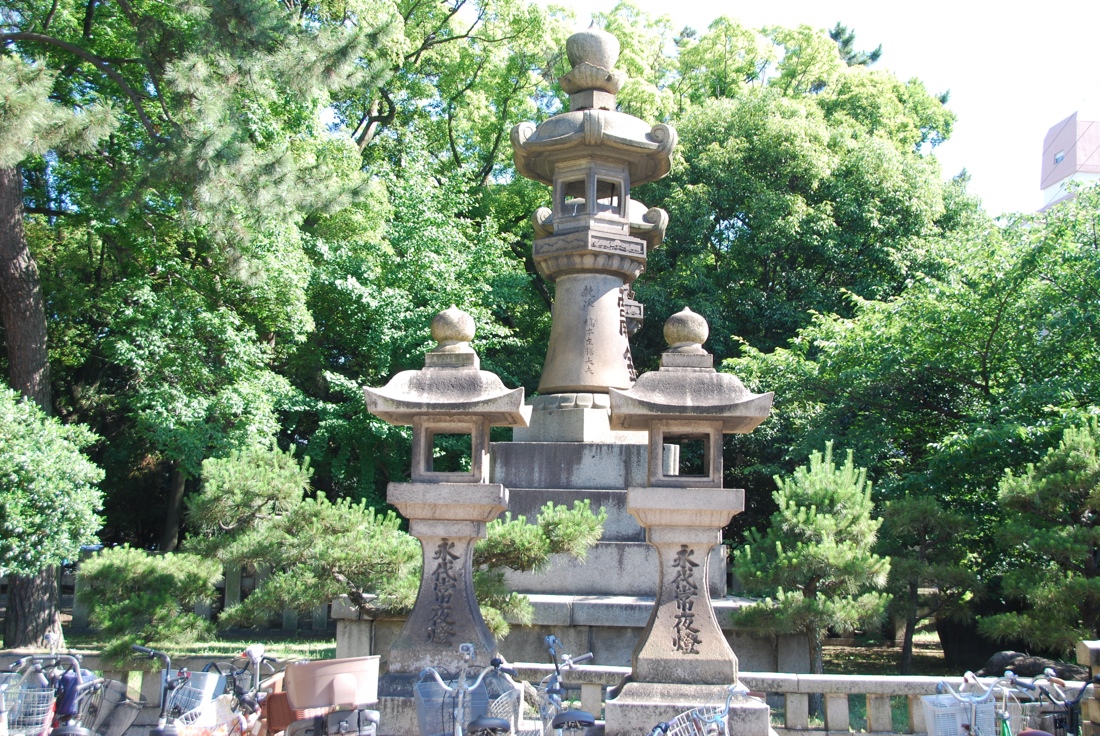
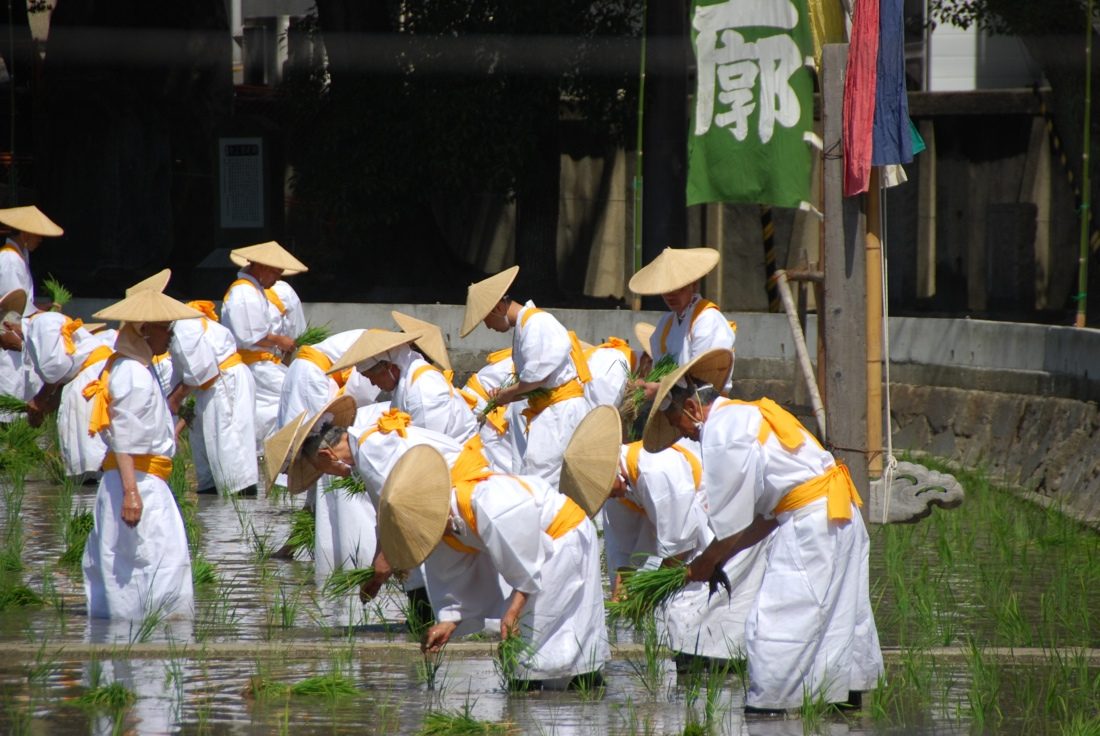
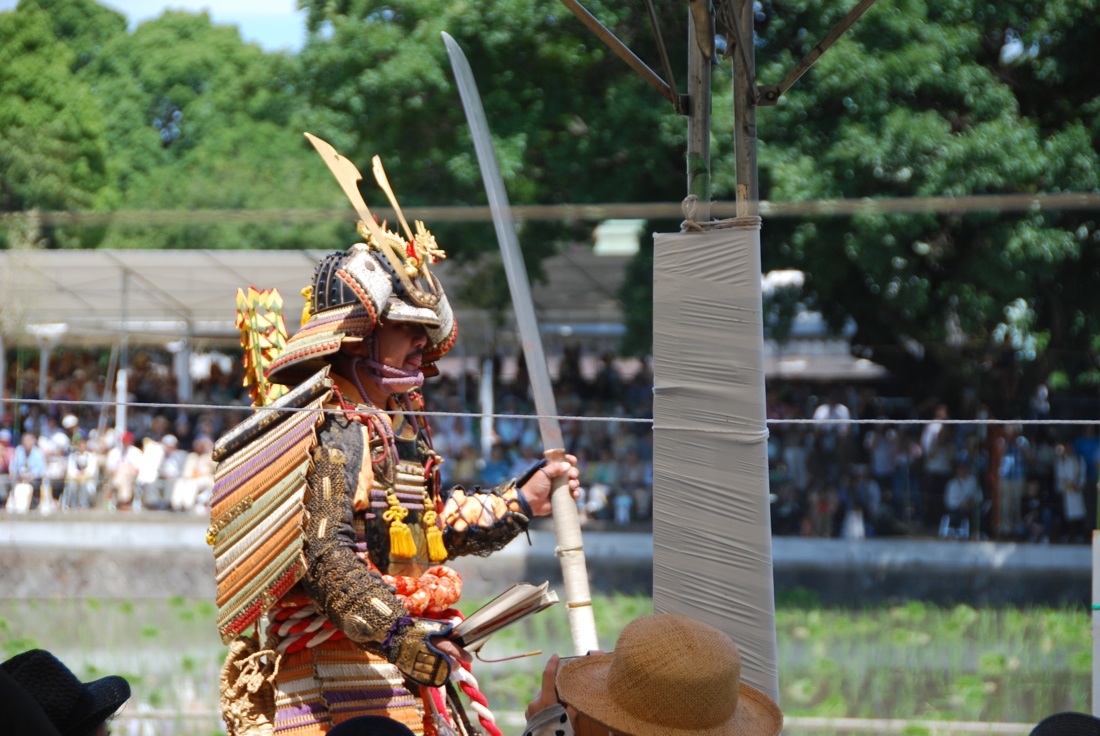
Comments (1)